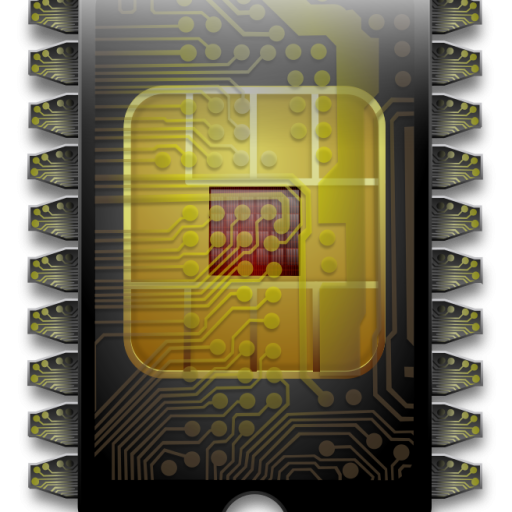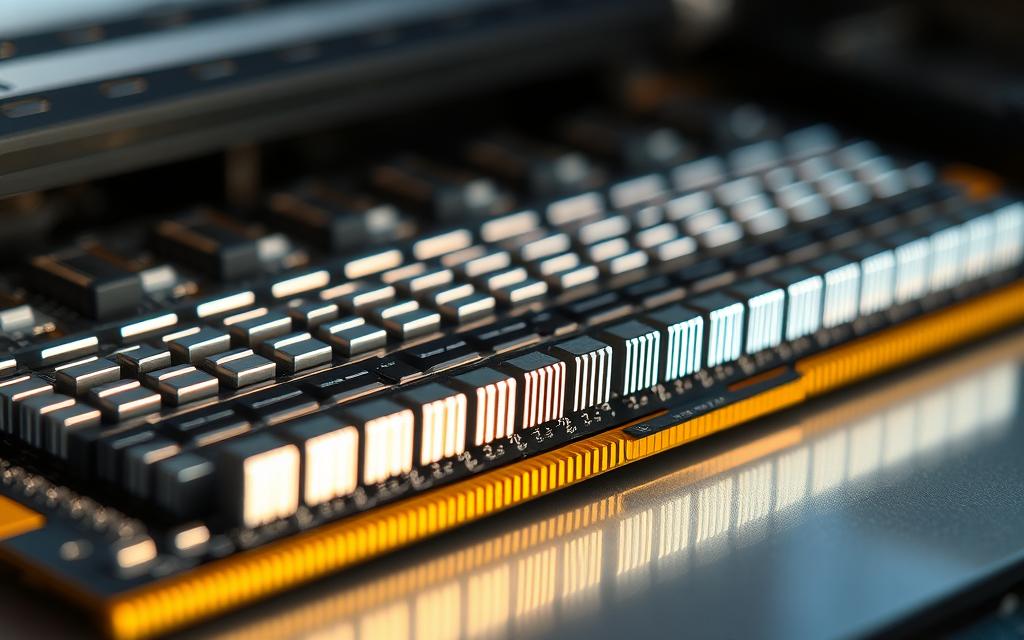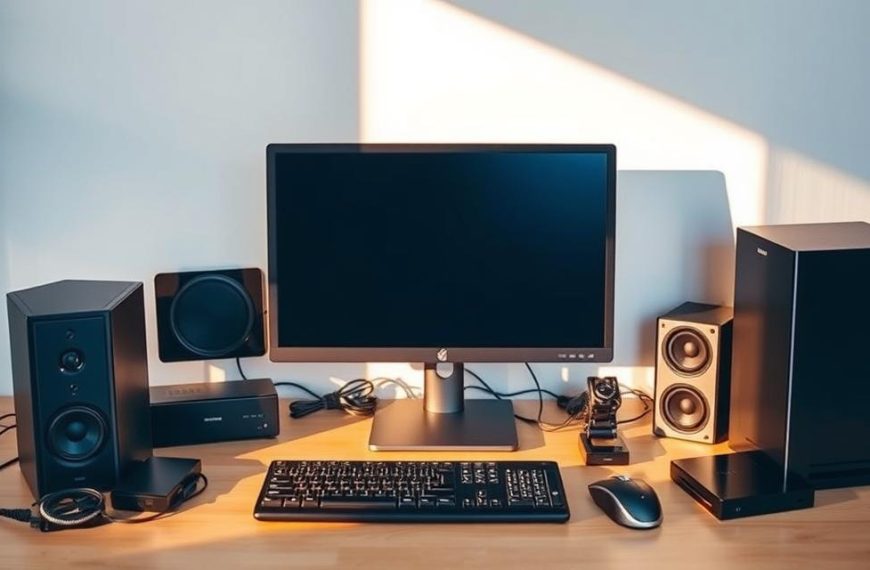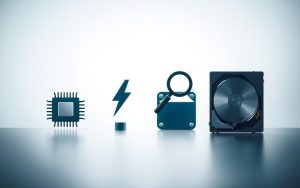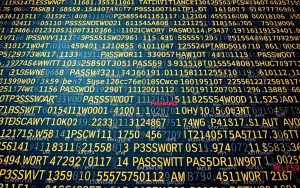Random access memory, or RAM, is a critical component that keeps your computer running smoothly. It acts as temporary storage for active tasks, allowing your system to access data quickly. Think of it like a desk where you keep everything you’re currently working on, while long-term storage is more like a filing cabinet.
RAM is much faster than traditional hard drives, with access times measured in nanoseconds. This speed is essential for multitasking, running applications, and ensuring your processor can work efficiently. Without enough RAM, your computer may slow down as it struggles to manage active processes.
Modern systems often come with 4GB to 64GB of RAM, depending on usage needs. Whether you’re gaming, editing videos, or simply browsing the web, having sufficient RAM ensures better performance and a smoother user experience.
What is RAM and How Does It Work?
Understanding random access memory is key to optimizing your system’s performance. This component acts as temporary storage for active tasks, allowing your computer to access data quickly. Unlike long-term storage, RAM is volatile, meaning it loses its data when power is turned off.
Definition of Random Access Memory
Random access memory (RAM) is a type of volatile memory that uses capacitors and transistors to store data. It’s called “random access” because it allows the processor to read or write data in any order, unlike sequential storage methods. This makes it ideal for handling multiple tasks simultaneously.
Modern RAM modules, like DDR4, operate at speeds ranging from 2,400 to 5,000 MHz. These modules are installed in DIMM slots on the motherboard, enabling dual-channel configurations for faster data transfer. The higher the RAM speed, the quicker your system can process information.
How RAM Functions in a Computer
RAM works by temporarily storing data that the processor needs to access quickly. When you open an application, its data is loaded from the hard drive into RAM. This allows the processor to retrieve and process the data much faster than if it were stored on a slower drive.
Dynamic RAM (DRAM), the most common type, requires constant electrical charge refreshes to retain data. In contrast, static RAM (SRAM) is faster but more expensive, often used in cache memory. The operating system manages RAM allocation, ensuring each application gets the resources it needs.
For systems with more than 4GB of RAM, a 64-bit operating system is required. This allows the computer to utilize larger amounts of memory efficiently. Misconceptions about RAM often confuse it with long-term storage, but its role is to provide immediate access to active data, not to store files permanently.
What’s the Purpose of RAM in a Computer System?
Efficient multitasking relies heavily on the presence of sufficient RAM. This component ensures your system can handle multiple tasks simultaneously without slowing down. By providing quick access to active data, RAM enhances overall performance and responsiveness.
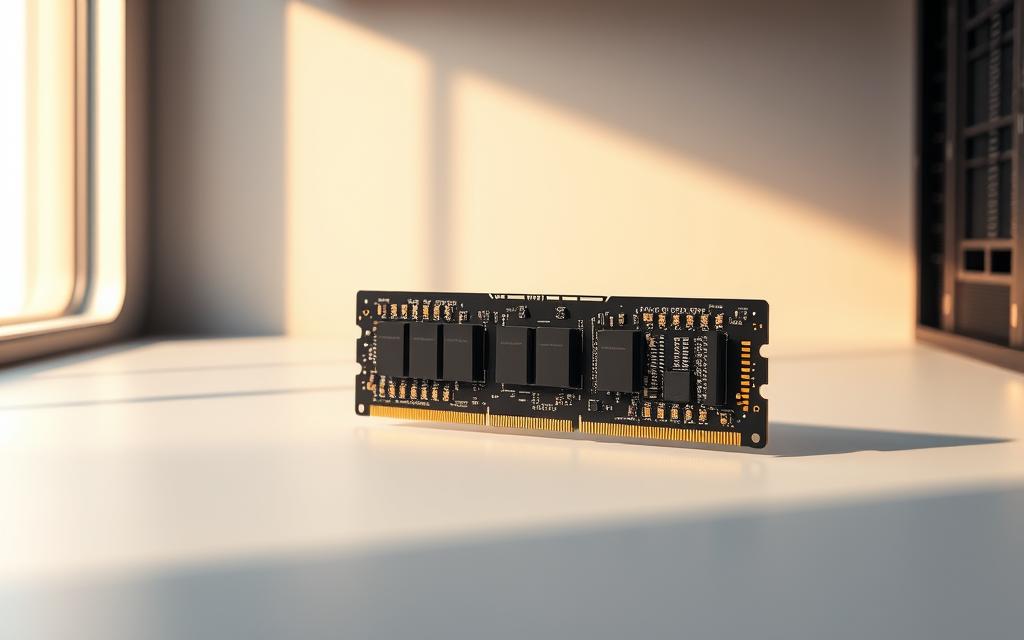
Why RAM is Essential for Immediate Data Access
RAM allows your system to retrieve and process data in nanoseconds, far faster than traditional storage options. For example, DDR4 RAM operates at speeds between 17 and 51.2 GB/s, ensuring smooth performance for demanding applications. This speed is crucial for tasks like gaming, video editing, or running multiple Chrome tabs.
Technologies like SuperFetch further optimize RAM usage by predicting which data will be needed next. This proactive approach reduces load times and improves efficiency. Without sufficient RAM, your system would rely on slower storage options, leading to noticeable delays.
RAM vs. Long-Term Storage: Key Differences
While both RAM and long-term storage handle data, their roles are distinct. RAM provides temporary storage for active tasks, while devices like SSDs and HDDs store files permanently. RAM is volatile, meaning it loses data when powered off, whereas storage devices retain information indefinitely.
Latency is another key difference. RAM operates in nanoseconds, while SSDs and HDDs have microsecond and millisecond latencies, respectively. This makes RAM ideal for tasks requiring immediate access to data.
| Component | Speed | Latency | Persistence |
|---|---|---|---|
| RAM | 17-51.2 GB/s | Nanoseconds | Volatile |
| SSD | 500 MB/s – 7 GB/s | Microseconds | Non-volatile |
| HDD | 80-160 MB/s | Milliseconds | Non-volatile |
“RAM is the unsung hero of modern computing, enabling the speed and efficiency we often take for granted.”
Upgrading RAM is often more cost-effective than expanding storage. It provides immediate performance improvements, especially for systems running memory-intensive applications. Whether you’re a gamer, content creator, or casual user, understanding the role of RAM can help you optimize your system for better results.
Why is RAM Critical for Computer Performance?
The efficiency of your system hinges on the amount of RAM available. This component directly impacts how quickly your CPU can process tasks, ensuring smooth operation for both simple and complex applications.
How RAM Affects Speed and Multitasking
RAM plays a pivotal role in determining your system’s speed. When you run multiple programs simultaneously, RAM ensures each one has enough space to operate efficiently. For instance, 8GB of RAM might handle basic multitasking, but 16GB is often necessary for demanding workflows like game streaming or 4K video editing.
Real-world tests show that systems with higher RAM capacity experience faster load times and fewer performance bottlenecks. This is especially noticeable when using memory-intensive software like OBS for streaming or Adobe Premiere for video editing.
The Role of RAM in Running Applications
When you launch an application, its data is loaded into RAM for quick access. This process is crucial for maintaining performance, as retrieving data from RAM is significantly faster than accessing it from long-term storage. For example, gaming FPS improves dramatically with adequate RAM, as textures and assets are readily available.
Background processes also rely on RAM. If your system runs out of memory, it uses a virtual memory swap file, which can slow down operating speeds. Upgrading RAM is often the most effective way to avoid these penalties.
Whether you’re using a laptop or desktop, understanding RAM’s role can help you optimize your system for better results. From gaming to content creation, having sufficient RAM ensures your applications run smoothly and efficiently.
Different Types of RAM and Their Uses
Not all RAM is created equal—different types serve unique purposes in modern systems. From powering everyday tasks to handling intense graphics workloads, each variation offers distinct advantages. Understanding these differences helps you choose the right components for your needs.
DRAM vs. SRAM: What’s the Difference?
Dynamic RAM (DRAM) is the most common memory type in computers. It stores each bit of data in a separate capacitor, requiring constant refreshing. This makes it slower but more affordable than SRAM.
Static RAM (SRAM) uses flip-flops to store data, eliminating refresh needs. It’s significantly faster but more expensive, typically used in CPU cache memory. Key differences include:
- Speed: SRAM operates at 1-30ns vs DRAM’s 50-70ns
- Cost: SRAM costs 5-10x more per GB
- Power: DRAM consumes more energy due to refresh cycles
Understanding DDR SDRAM and Its Generations
DDR SDRAM (Double Data Rate Synchronous DRAM) dominates modern systems. Each generation improves upon the last:
| Generation | Release Year | Max Bandwidth |
|---|---|---|
| DDR3 | 2007 | 17 GB/s |
| DDR4 | 2014 | 25.6 GB/s |
| DDR5 | 2020 | 51.2 GB/s |
Newer DDR versions offer better power efficiency alongside speed boosts. DDR5’s improved architecture allows for higher capacities per module.
Specialized RAM: VRAM and Its Role in Graphics
Video RAM (VRAM) handles graphical data for displays and GPUs. Modern variants like GDDR6 and HBM2e deliver exceptional performance:
- GDDR6: Standard in gaming GPUs, up to 16Gbps speeds
- HBM2e: Uses 3D stacking for ultra-wide 4096-bit buses
For 4K/8K gaming, ample VRAM prevents texture loading issues. Current high-end cards feature 16-24GB of dedicated graphics memory.
When choosing RAM, consider:
- CAS latency (CL) numbers—lower means faster response
- ECC support for workstation reliability
- Mobile (LPDDR) vs desktop compatibility
“The right RAM type can make or break specialized computing tasks.”
How Much RAM Do You Really Need?
Determining the right amount of RAM ensures your device operates at peak efficiency. Whether you’re a casual user or a professional, understanding your computing needs helps you make informed decisions.

RAM Requirements for Everyday Tasks
For basic tasks like web browsing or document editing, 8GB of RAM is usually sufficient. However, modern browsers like Chrome can consume around 4GB with just 10 tabs open. If you multitask frequently, upgrading to 16GB ensures smoother performance.
Casual users can manage with 8GB, but those running multiple applications or handling large files should consider 16GB. This provides enough space for seamless multitasking without slowdowns.
Optimal RAM for Gaming and Content Creation
Gamers and content creators need more RAM to handle demanding software. AAA games from 2023-2024 often require at least 16GB for optimal performance. Video editing tools like Premiere Pro can use even more, especially with 4K or 8K projects.
For gaming, 16GB is the sweet spot, but 32GB future-proofs your system for upcoming titles. Content creators benefit from 32GB or more, ensuring smooth rendering and multitasking.
When to Consider Upgrading Your RAM
Upgrading RAM is cost-effective and provides immediate performance improvements. If your laptop or desktop struggles with multitasking or running programs, it’s time to consider an upgrade.
Check your current RAM usage through task manager tools. If usage consistently exceeds 70%, upgrading can prevent slowdowns. Dual-channel configurations also enhance performance by doubling data transfer rates.
“Upgrading RAM is one of the simplest ways to breathe new life into an aging system.”
Whether you’re a casual user, gamer, or professional, having the right amount of RAM ensures your device runs efficiently. Evaluate your needs and upgrade accordingly for a smoother experience.
Common Issues Caused by Insufficient RAM
Running out of memory can severely impact your device’s functionality. When your system lacks enough RAM, it struggles to handle active tasks, leading to noticeable slowdowns and errors. Recognizing these issues early can help you take corrective action before they escalate.

Signs Your Computer Needs More RAM
Several symptoms indicate your computer is running low on memory. Frequent app crashes, slow load times, and unresponsive interfaces are common red flags. If your disk activity light stays on constantly, it might be due to excessive paging, a sign of insufficient memory.
Other signs include:
- Browser tabs crashing or reloading frequently
- Delayed response when switching between applications
- Error messages about low memory or virtual memory
Using tools like Windows Task Manager can help monitor memory usage. If your operating system consistently uses a high percentage of available memory, it’s time to consider an upgrade.
How Insufficient RAM Affects Performance
When your system lacks enough RAM, it compensates by using a swap file on your disk. This process, known as paging, is significantly slower than accessing data directly from memory. As a result, performance drops, and tasks take longer to complete.
Memory-intensive programs like video editors or games may crash or fail to load. Background processes can also suffer, causing system-wide slowdowns. In extreme cases, you might encounter Blue Screen of Death (BSOD) errors related to memory issues.
Upgrading your memory is often the most effective solution. It ensures your device can handle demanding files and applications without compromising speed or stability.
Tips for Optimizing Your RAM Usage
Maximizing your device’s performance starts with efficient RAM management. Whether you’re using a laptop or desktop, these strategies can help you get the most out of your memory.
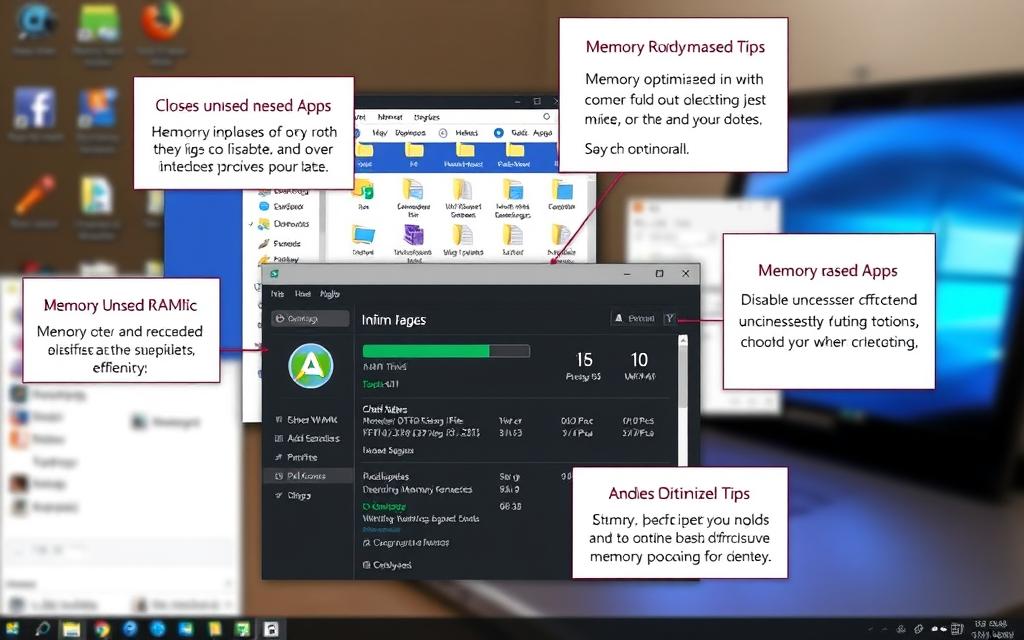
Closing Unnecessary Applications
One of the simplest ways to free up RAM is by closing unused applications. Background processes can consume significant memory, slowing down your device. Use tools like Task Manager to identify and terminate resource-heavy programs.
Disabling startup programs can also help. Many software applications launch automatically, consuming memory before you even start working. Adjusting these settings ensures your operating system allocates resources more efficiently.
Using Tools to Free Up RAM
Several utilities can help optimize RAM usage. Memory cleaner tools clear inactive processes, while software like Avast Cleanup’s Sleep Mode pauses non-essential programs. These tools are particularly useful for systems with limited memory.
Configuring virtual memory is another effective strategy. By setting a page file on your drive, you can supplement physical RAM and reduce performance bottlenecks. However, this should not replace upgrading your memory when necessary.
Upgrading RAM vs. Other Performance Enhancements
Upgrading RAM is often the most cost-effective way to boost performance. Compared to other enhancements like SSD upgrades, adding more memory provides immediate benefits for multitasking and running demanding applications.
However, combining RAM upgrades with other improvements can yield even better results. For example, pairing faster components like an SSD with additional memory ensures your device operates at peak efficiency.
| Enhancement | Cost | Performance Impact |
|---|---|---|
| RAM Upgrade | $50-$150 | Immediate multitasking improvement |
| SSD Upgrade | $100-$300 | Faster boot and load times |
| GPU Upgrade | $200-$1000 | Enhanced graphics and rendering |
“Efficient RAM management is the cornerstone of a high-performing system.”
For more detailed strategies on how to optimize RAM for maximum performance, explore these expert tips. Whether you’re a casual user or a professional, these techniques can help you make the most of your device’s resources.
Conclusion: The Vital Role of RAM in Modern Computing
From its early days in the 1990s to today’s advanced systems, RAM has evolved significantly. It remains a cornerstone of efficient computing, bridging the gap between storage and processing. Without sufficient RAM, even the most powerful components struggle to deliver optimal performance.
Emerging technologies like CXL memory pooling promise to revolutionize how systems handle data. These advancements will further enhance access speeds and multitasking capabilities. However, balancing RAM upgrades with other components like SSDs and GPUs is crucial for a well-rounded computer.
For users, proactive monitoring and regular maintenance ensure your system runs smoothly. Upgrading RAM is often the most cost-effective way to boost performance, especially for memory-intensive tasks. As computing trends evolve, RAM will continue to play a pivotal role in shaping the future of technology.
